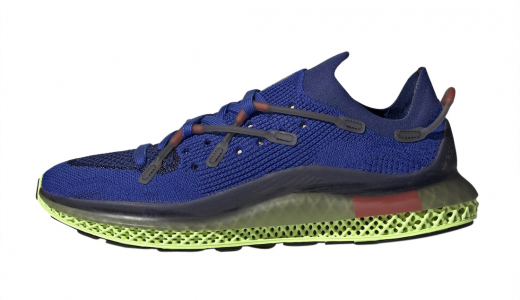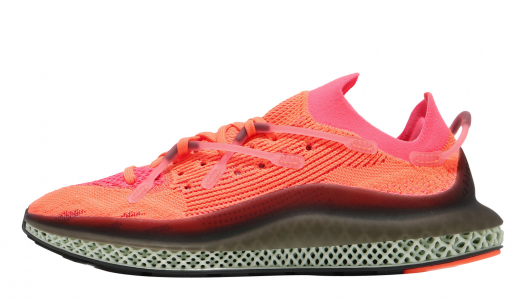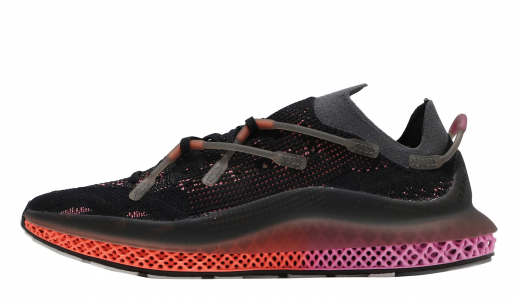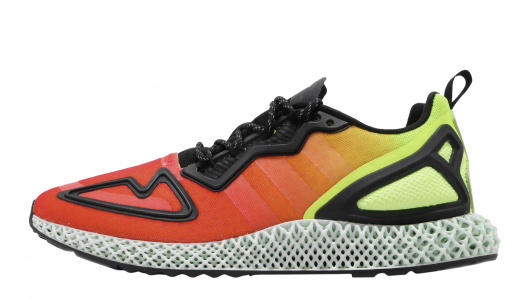Adidas 4d
Adidas 4D is a groundbreaking innovation in the world of athletic footwear, utilizing digital light synthesis to create midsoles with unprecedented precision and functionality. The process begins with a liquid resin that is transformed into a solid structure through the careful application of moving light and oxygen. This technology allows for the creation of intricately designed lattice structures that are customized for optimal performance, cushioning, and stability. Furthermore, the design process incorporates athlete data to tailor the midsoles to specific performance requirements, making each pair particularly suited for the intended type of physical activity.
Beyond the technological marvel of its production, Adidas 4D represents a significant leap towards sustainability in the sneaker industry. Traditional manufacturing methods often involve significant waste and energy consumption. However, the digital light synthesis process used for Adidas 4D reduces material waste significantly by exactly mapping out and producing only the necessary components of the midsole. Additionally, Adidas continues to explore the use of recyclable and renewable materials in conjunction with their advanced manufacturing techniques, aligning their innovation with their commitment to creating sustainable, high-performance athletic wear. This blend of cutting-edge technology and environmental responsibility positions Adidas 4D at the forefront of modern athletic footwear innovation.
History of Adidas 4d
The story of the Adidas 4D line is one of innovation, futuristic thinking, and modern technology applied to create better athletic performance wear. As one of the prime exemplars of blending cutting-edge technology with traditional sneaker culture, the journey of Adidas 4D is a fascinating one, filled with groundbreaking advancements and visionary collaborations.
Origins and Inception
The roots of Adidas 4D can be traced back to the company’s continued quest for pioneering advancements in sports footwear. Adidas, officially founded in 1949 by Adolf "Adi" Dassler, already had a rich history of innovation. Over the decades, the company was responsible for several breakthroughs, including the use of screw-in studs in football boots and the introduction of Boost technology. However, with the rapid development of 3D printing technology, Adidas saw an opportunity to revolutionize its approach to shoe design and manufacturing.
The conception of Adidas 4D was a result of Adidas’s partnership with Carbon, a Silicon Valley-based tech company specializing in 3D printing technologies. Unlike traditional 3D printing, which builds objects layer by layer, Carbon's proprietary Digital Light Synthesis (DLS) technology uses light and oxygen to craft intricate lattice structures from a pool of liquid resin. This innovative method allowed Adidas to envision a new frontier for performance footwear, particularly in the creation of midsole components.
Development Phase
The implementation of Digital Light Synthesis for midsoles came after years of research and collaboration. Carbon and Adidas aimed to create a midsole that could outperform traditional foams and be fine-tuned to offer personalized cushioning and support. The partnership's exploratory phase began around 2015, with the goal of developing a product that could not only be customized for individual athletes but also offer reproducible, high-quality performance across mass production.
This phase of research and development saw several key milestones. For instance, Adidas trialed many versions of lattice designs, assessing the structural properties and performance benefits of each iteration. The midsole needed to provide optimal energy return, shock absorption, and durability, all while remaining lightweight. After rigorous testing and prototyping, the first successful designs started to emerge, and the focus shifted to scalability and integration into Adidas’s larger product portfolio.
Unveiling the Futurecraft 4D
In April 2017, Adidas unveiled the Futurecraft 4D, the first shoe to feature the groundbreaking DLS 3D-printed midsole. Designed as a limited-edition release, the Futurecraft 4D generated significant buzz, both within the sneaker enthusiast community and among sports professionals. The unveiling of the Futurecraft 4D was more than just a product launch; it marked the beginning of a new era for Adidas, demonstrating the company’s capability to integrate state-of-the-art technology into everyday athletic wear.
The Futurecraft 4D’s lattice midsole, produced from a unique combination of synthetic resin and light-curing agents, featured geometric shapes precisely engineered to direct and relieve pressure during movement. The midsole's structure was tailored to provide optimal cushioning and stability, enhancing the wearer’s overall performance. With its futuristic aesthetics and performance-enhancing capabilities, the Futurecraft 4D garnered acclaim from athletes, industry experts, and tech enthusiasts alike.
Performance and Athlete Feedback
Adidas placed a strong emphasis on gathering feedback from athletes during the development of the 4D collection. Athletes often require specific performance characteristics from their footwear, and the Digital Light Synthesis technology allowed Adidas to fine-tune these qualities in unprecedented ways. Athletes reported enhanced comfort and performance due to the unique properties of the 4D lattice structure, validating the company’s investment in the technology.
In 2018, Adidas expanded the 4D line with the Alphedge 4D and the Y-3 Runner 4D, collaborations with Yohji Yamamoto that combined avant-garde fashion with high-performance features. These models offered a more accessible and wide-ranging application of the technology, proving that the 4D midsole wasn’t merely a gimmick but a substantial advancement in footwear design.
Collaborations and New Designs
The Adidas 4D line quickly became a platform for innovation and collaboration. Notable collaborations included partnerships with renowned designers and brands such as Stella McCartney, Parley for the Oceans, and popular streetwear labels like KITH. Each collaboration brought fresh perspectives and aesthetics to the 4D platform, expanding its appeal across different lifestyle and performance segments.
For instance, the collaboration with Parley for the Oceans focused on sustainability, incorporating recycled ocean plastics into the shoe’s construction. This partnership not only showcased the versatility of the 4D technology but also aligned with Adidas’s corporate social responsibility goals to reduce plastic waste. The combination of sustainability and technological advancement resonated well with environmentally conscious consumers and further bolstered the 4D line's reputation.
Evolution and Market Expansion
By 2019, the Adidas 4D line had firmly established itself in the market, and Adidas continued to push the envelope by introducing more refined models and further exploring the applications of 4D technology. The company released the Adidas 4D Run 1.0, a running shoe specifically engineered to maximize the benefits of the 4D midsole for long-distance runners. The 4D Run 1.0 boasted improved breathability, grip, and energy return, underscoring Adidas’s commitment to continuous improvement and athlete-centric design.
In parallel, Adidas invested in expanding the production capacity of its 4D technology. Recognizing the growing demand and potential for customization, the company sought to optimize the manufacturing process, reducing costs and production times. This strategic focus on scalability enabled Adidas to offer 4D footwear at more competitive prices, making the technology accessible to a broader audience.
Recent Innovations and Future Prospects
The Adidas 4D line has continued to evolve with each successive release, incorporating the latest advancements in materials science, biomechanics, and production techniques. The introduction of the 4D Fusio in 2021 showcased a new aesthetic direction, featuring bold design elements and vibrant colors while maintaining the functional benefits of the 4D midsole.
Moreover, Adidas has continued to explore the potential for 4D technology beyond footwear. The company has experimented with using Digital Light Synthesis to create performance apparel and other athletic accessories, hinting at an integrated ecosystem of 4D-enhanced products in the future.
As of today, the Adidas 4D line remains a symbol of innovation and excellence in modern sportswear. The technology has fundamentally changed how Adidas approaches product design and manufacturing, setting new standards for performance, comfort, and customization. The successful integration of DLS technology into the Adidas portfolio exemplifies the company’s forward-thinking mindset and dedication to pushing the boundaries of what is possible in sportswear.
Conclusion: Impact and Legacy
The Adidas 4D story is not just about creating a better sneaker; it’s about reimagining the possibilities of athletic performance through the lens of advanced technology. From the initial collaboration with Carbon to the widespread acclaim and numerous subsequent releases, the journey of Adidas 4D represents a landmark in sportswear innovation.
The creation and evolution of the Adidas 4D line have had a profound impact on the industry, inspiring other sportswear companies to explore similar technologies and pushing the envelope of what athletic footwear can achieve. Beyond its technological prowess, the 4D line has also played a crucial role in bringing sustainability to the forefront of sneaker design, marrying performance with environmental consciousness.
As Adidas looks to the future, the legacy of the 4D line will undoubtedly continue to shape the company’s approach to innovation. The principles of customization, advanced manufacturing, and athlete-centric design established through the 4D journey set a high bar for future developments. With a commitment to pushing the boundaries of technology and performance, Adidas 4D stands as a testament to the power of innovation in transforming not just products, but entire industries.
In summary, the Adidas 4D line has not only introduced a groundbreaking technology to the world of sports footwear but has also set a precedent for how technology can be harnessed to improve performance and sustainability in the sports and fashion industries. With its ongoing evolution and adaptation, Adidas 4D continues to be a beacon of innovation, reflecting the brand's heritage of excellence and its vision for a more advanced and sustainable future.























